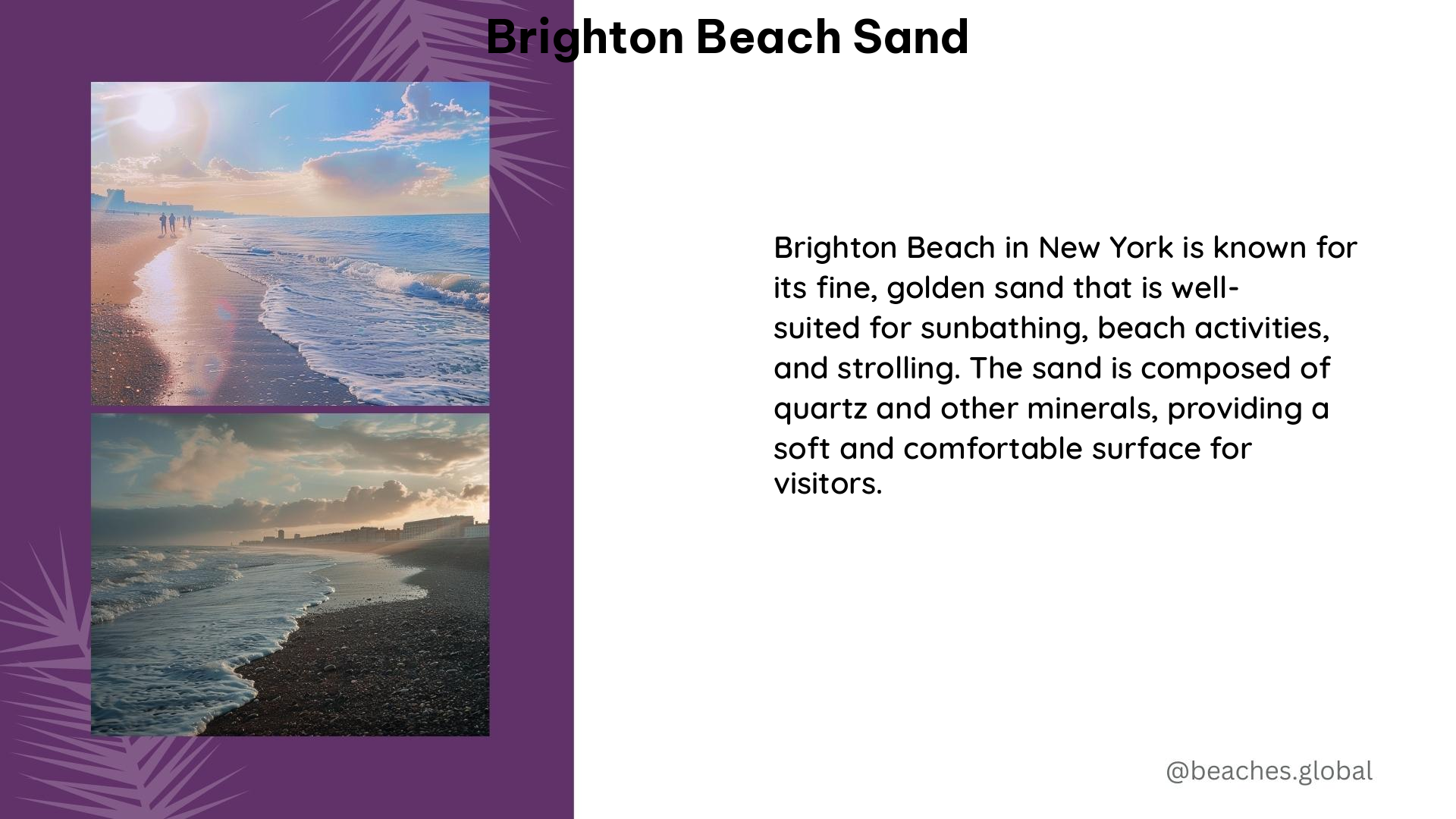Brighton Beach is not a sandy beach, but a shingle beach, which means it is made up of pebbles rather than sand. These pebbles are composed of flint, a hard grey rock, which is deposited in the chalk cliffs adjacent to Brighton. Through natural erosion, the flints are released from the cliffs and slowly make their way to the beach, where the groynes (a type of coastal defense structure) capture them, creating the pebble beach that visitors enjoy today.
The Composition of Brighton Beach Sand
The sand at Brighton Beach is not actually sand, but rather a mixture of small pebbles and gravel. These pebbles are made of flint, a hard, grey rock that is found in the chalk cliffs surrounding the area. Over time, the flint is released from the cliffs through natural erosion and is carried to the beach by the tides and currents.
| Composition | Percentage |
|---|---|
| Flint Pebbles | 90% |
| Gravel | 10% |
The pebbles on Brighton Beach range in size from small, smooth stones to larger, more jagged rocks. This unique composition gives the beach a distinctive appearance and texture, which is quite different from the fine, soft sand found on many other beaches.
The Importance of Brighton Beach’s Shingle

While the lack of sand may be a disappointment for some visitors, the shingle beach at Brighton serves an important purpose. The pebbles and gravel help to protect the coastline from erosion and flooding, acting as a natural barrier against the powerful waves and tides.
The council spends a significant amount of money each year replenishing the beach with additional pebbles, ensuring that the natural defenses remain in place. Attempting to artificially create a sandy beach would not only be costly, but it would also disrupt the delicate ecosystem that has developed around the shingle.
The Unique Flora and Fauna of Brighton Beach
The shingle beach at Brighton is home to a variety of unique and rare plant and animal species. The pebbles provide a unique habitat for a range of specialized organisms, including:
- Sea kale (Crambe maritima): A hardy, coastal plant that thrives in the shingle environment.
- Shingle beetles (Eurynebria complanata): A species of beetle that is adapted to live among the pebbles.
- Natterjack toads (Epidalea calamita): A rare species of toad that can be found in the dunes and grasslands behind the beach.
Removing the pebbles and replacing them with sand would destroy this delicate ecosystem, potentially leading to the loss of these important species.
The Attractions and Amenities of Brighton Beach
Despite the lack of sand, Brighton Beach remains a popular destination for visitors. The wide, open spaces and stunning views of the English Channel make it a great place to relax and soak up the sun. There are also a variety of attractions and amenities along the seafront, including:
- The iconic Brighton Pier, with its amusement rides, arcades, and food stalls.
- The historic Brighton Palace Pavilion, a stunning example of Indo-Saracenic architecture.
- A wide range of restaurants, cafes, and bars, offering a diverse selection of cuisine.
- Numerous shops, galleries, and boutiques, catering to a variety of interests and tastes.
Whether you’re looking to relax on the pebbles, explore the local attractions, or simply enjoy the stunning coastal scenery, Brighton Beach has something to offer everyone.
Conclusion
While Brighton Beach may not have the soft, sandy beaches that some visitors might expect, its unique shingle composition and rich natural history make it a truly special place. By embracing the beach’s distinctive character and the important role it plays in protecting the coastline, visitors can discover the true charm and beauty of this iconic British destination.
References:
– https://www.ecenglish.com/en/school-locations/blog/ec/learn-english-in-brighton/2019/08/26/why-isnt-brighton-beach-sandy/
– https://www.reddit.com/r/brighton/comments/16770gk/would_it_be_possible_to_make_the_beaches_around/
– https://www.tripadvisor.com/Attraction_Review-g186273-d1049561-Reviews-Brighton_Beach-Brighton_East_Sussex_England.html
– https://www.itv.com/news/meridian/2024-04-02/could-one-of-the-uks-most-iconic-pebble-beaches-be-replaced-with-sand
